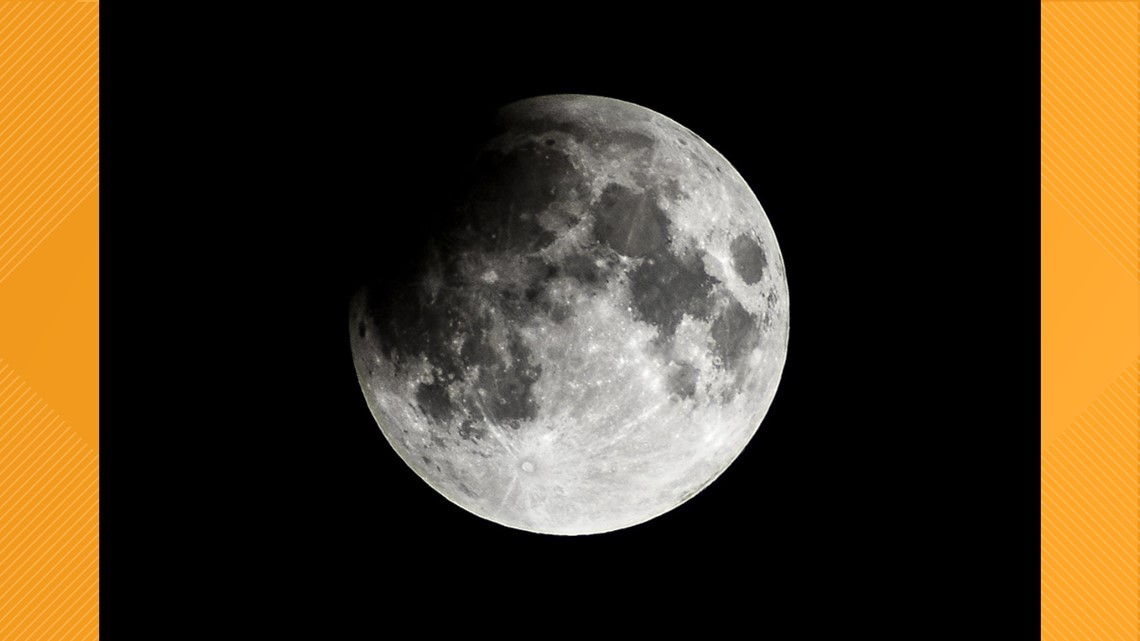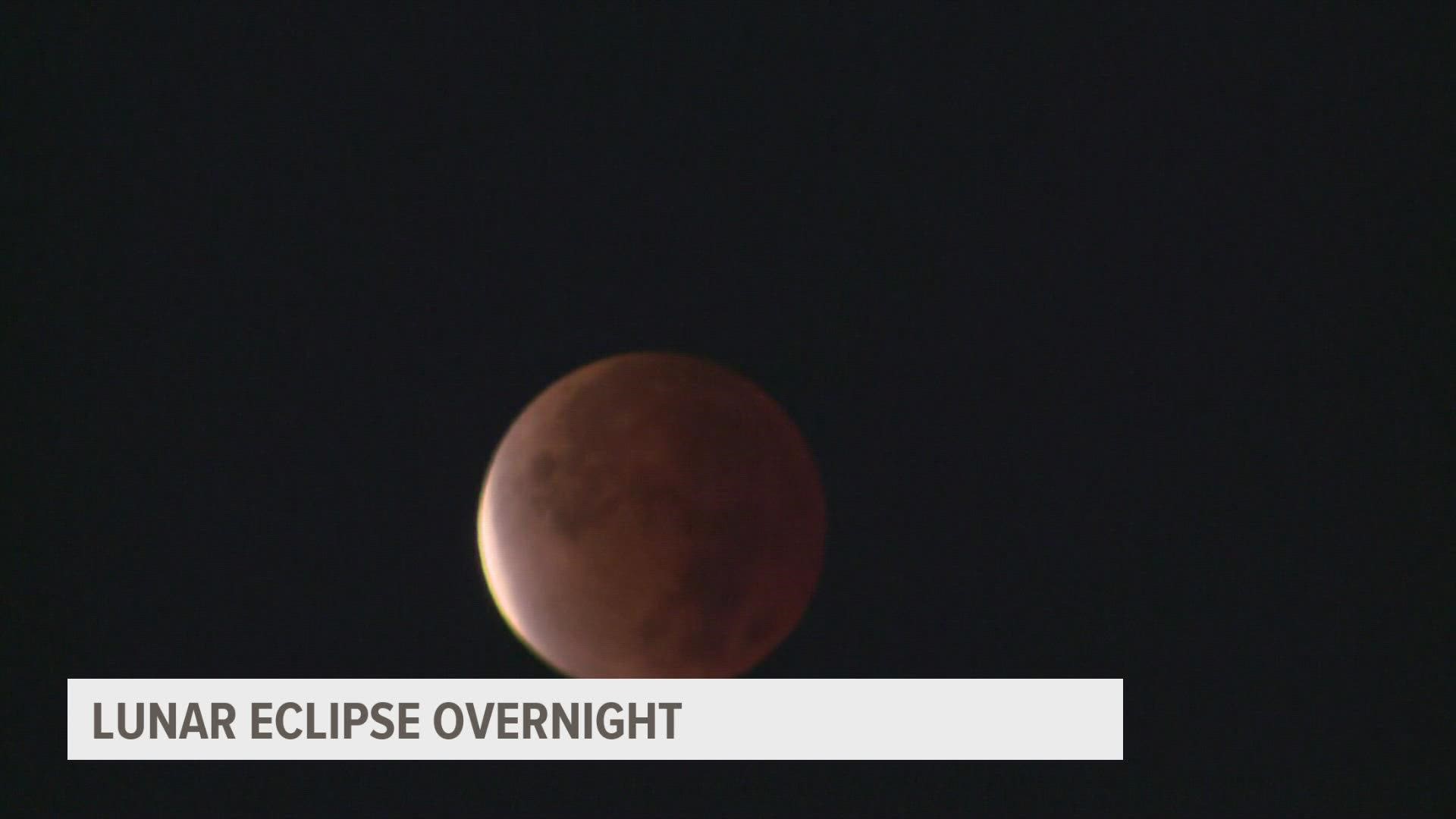DES MOINES, Iowa — Those brave enough to battle the bitter cold early Friday morning got to see a real treat: The longest lunar eclipse in more than 500 years!
While this particular eclipse was not technically a "full eclipse," it was quite close with 97% of the moon covered by the Earth at its peak.
The peak occurred around 3 a.m., and clouds held off long enough in central Iowa for some great views.
Viewing conditions were optimal across much of the country too.
At the time of the lunar eclipse, temperatures across central Iowa were in the 10s and 20s, while wind chills had dropped to the single digits and low 10s.


Clouds were increasing across western Iowa just hours before the eclipse's peak, but they did not thicken up enough to altogether obscure the view.


Lunar eclipses are vastly different from their solar counterparts and occur far more frequently.
"In a solar eclipse, it's the shadow of the moon that's cast on the Earth. The shadow of the moon on the Earth is much smaller. You have to be in the right spot at the right time to see it," said Charlie Nelson, a professor at Drake University. "The lunar eclipse, on the other hand, anyone who can see the moon can see the eclipse—half of the planet."
The next solar eclipse will happen in April 2024. It will only be partially visible from Iowa.
WATCH | WEATHER LAB: Why does the morning low temperature occur after sunrise?

